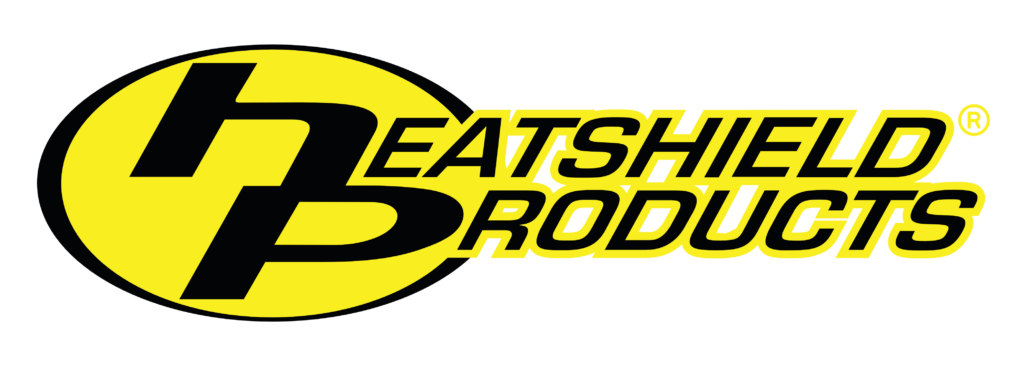Cutting Through the Bull: Top Exhaust Wrap Myths
If you’re looking for a way to reduce heat under the hood of your vehicle, it’s time to learn the exhaust wrap benefits along with the exhaust wrap myths that scare people away from using it. Besides making the best, most effective exhaust insulation products on the market, Heatshield Products also works to educate enthusiasts so they can pick the best insulation and thermal barrier products for their application, and see the best results after installation.
There are a lot of myths and misconceptions about exhaust wrap that make people avoid what is one of the best solutions for cutting underhood heat while also improving exhaust system performance.

Top Exhaust Wrap Myths & Facts You Need to Know
-
MYTH: All Heat Wrap Exhaust Options Are the Same
For Heatshield Products, quality is always at the top of our list. It’s easy for companies to put out low-quality exhaust wrap products with misleading advertising. That’s why we back up our claims with real-world hard data that doesn’t leave any room for doubt. All of our heat ratings for our various exhaust wraps are set through extensive testing so we know the product will deliver the expected results.
When it comes to exhaust wraps, you can have differences in the fibers the wrap is made from, the filler materials used to bond the fibers together, and coatings used on the fibers to give them resistance to moisture, fluids and other underhoods exposure. These various filler materials also contribute to why exhaust wraps will emit a small amount of smoke during initial heat-cycling.
Cheap exhaust wraps will use substandard fillers that not only lead to underperformance and shorter wrap life, but also can emit noxious and harmful vapors during the initial heat cycles after the wrap is first installed. Also, the materials used in these cheap wraps can lead to them releasing fibers into the air that you can inhale, a risk to your health.
Substandard materials used in cheap, often overseas manufactured exhaust wraps also are the reason why cheap wraps will become brittle and start to come apart after a much shorter period of use than is advertised. This is a direct contrast to our Lava Exhaust Wrap, which stays flexible even after numerous heat cycles.
Another aspect that sets cheap exhaust wraps apart from quality exhaust wraps is the accuracy of the heat rating. Cheap, substandard materials used in their construction are why cheap wraps often degrade and start to fail prematurely. The poor quality means the amount of heat the wrap can withstand is well below what is claimed, even when used on an application the wrap’s advertised specs should be able to handle.
The pros and cons of exhaust wraps vary widely depending on the products you use as well as the specific vehicle being treated. If you use a low-quality product in a high-performance race car, you’re naturally going to be disappointed when your wrap starts disintegrating. On the other hand, those who use high-quality, trusted exhaust wraps in the right settings consistently sing their praises.
- Fact: There Are Different Types of Vehicle Heat
When selecting the right car insulation material ask yourself; how hot does a car exhaust get? Remember, not all vehicle heat is the same. Before you purchase automotive heat shield products, you need to know if your vehicle is producing excessive conductive, convective, or radiant heat. In order to fully understand why exhaust wrap pros and cons vary from person-to-person and application, you have to recognize the source of the heat so you can find the right solution.Here’s a quick look at each type of heat:
- Conductive heat is when heat travels from one part to another through direct contact.
- Convective heat is when a part overheats because of its contact with a hot liquid or gas.
- Radiant heat is when a hot part radiates heat to another part that’s not directly touching it.
Once you’ve determined the source of the vehicle heat you need to control, you can select the right insulation and heat management products for your vehicle. When weighing your chosen product’s pros and cons, it’s crucial you consider the context, meaning you need to be using the right product to reduce the specific type of heat problem you’re having. A solution for conductive heat problems won’t solve radiant heat issues!

- Myth: You Only Need to Consider Intermittent Temperatures
One of the biggest exhaust wrap myths is you only need to know what the intermittent temperatures are and not the constant/service temperatures reach. Many companies advertise their intermittent temperature ratings and not constant/service temperature ratings. This misleads customers to selecting the wrong product, resulting in disappointment and frustration when their exhaust wrap isn’t able to withstand consistently high heat.
You can’t expect a well-performing product if you’re using wraps that don’t withstand high constant temperatures. Intermittent temperatures refer to the maximum amount of heat the wrap can handle for 30 seconds or less before it is compromised. Service — or constant — temperatures refer to the amount of heat a wrap can withstand for long, consistent periods of time.
Advertising the ability to withstand high intermittent temperatures is a trick that makes a wrap seem more durable and resilient than it actually is. Once that 30 seconds is up, performance starts suffering. At Heatshield Products, we provide accurate temperature ratings for both intermittent and service temperatures, so you know exactly what to expect.
- Fact: There Are Different Materials for Different Applications
To avoid having issues and getting the best performance from an exhaust wrap, you must be using the right wrap in the right situation/application. Heatshield Products makes different exhaust wraps made up of different materials. The materials used in each specific wrap are formulated/designed to handle certain temperature ranges known to occur in various applications. As you shop for your exhaust thermal wrap, make sure you know your own application’s specs so you can look at the correct options. If you’re not sure about what wrap you might need, the amount of heat your application might generate or anything else related to selecting the correct exhaust wrap, you can call or email us and one of our expert techs will help you in picking the correct exhaust wrap.
Here are some of the most common materials used in Heatshield Products exhaust wraps:
- Basalt (volcanic rock)
- Fiberglass/fiberglass yarn
- Stainless steel
- Aluminum
- Silica
- Myth: Exhaust Wraps Are Just for Looks and Don’t Benefit Performance
Sure, exhaust header wraps provide a clean look under the hood, especially on older headers that have aged finishes. But appearance is way down on the list for the real benefits and exhaust wrap provides underhood. As you consider the pros and cons, your first priority should be considering the performance benefits Heatshield Products exhaust wraps deliver in verifiable, tangible amounts. Increased engine performance, lower underhood heat, reduced heat-related wear to underhood components, reduction of turbo lag, shortened turbocharger spool times (how long it takes for the turbo to start making boost) and more before you get to the appearance aspect.

- Fact: Measuring Temperatures Is Important
Before purchasing an exhaust wrap, you should measure and find out what kind of temperatures you’re dealing with when it comes to how hot your headers and exhaust pipes get. This will help in selecting the correctly rated wrap for your vehicle. A simple laser thermometer gun can be used to measure pipe temperatures to give you an accurate readout of what’s going on. Never go by estimates, as there are too many factors when it comes to exhaust temperatures for estimates to be reliable enough to base wrap selection on.
If you have any questions about measuring your vehicle’s temperature, you’re more than welcome to contact our experts for guidance. You can also check our “Heat Shield Products Cars” guide and FAQ section on www.heatshieldproducts.com for further information on selecting the right exhaust heat shield.
- Myth: Exhaust Wrap Sprays Are Good Enough
Finally, one of the biggest exhaust wrap myths is that you can get the same performance and heat management with a thermal spray, paint or coating. If you find it necessary to use a silicone spray to seal your header wrap, that means you’re using the wrong wrap. While having exhaust headers ceramic coated or similar does provide some thermal benefits, they are insignificant compared to installing a quality exhaust wrap that truly insulates the exhaust pipes.
Contact Us for More Information
We know there is a lot to consider when it comes to selecting and purchasing a good, effective exhaust wrap. The most important fact to remember is wraps are extremely beneficial, but only if you use the right one for your vehicle. If you’re struggling to select suitable wraps for your vehicle, we encourage you to contact us for expert assistance. In addition to recommending the right products for your vehicle’s make and model, we can help you select component-specific heat shields if necessary. We also carry motorcycle heat shields, marine heat shields, industrial heat shields, and more. As experts in heat management, we’re eager to help you make an informed decision so your experience is a positive one. Honesty is always our highest priority. We’ve provided you with the pros and cons, so it’s up to you to decide if wraps are the right solution for your needs. Contact us now for a free consultation or list of locations where you can find our products.

